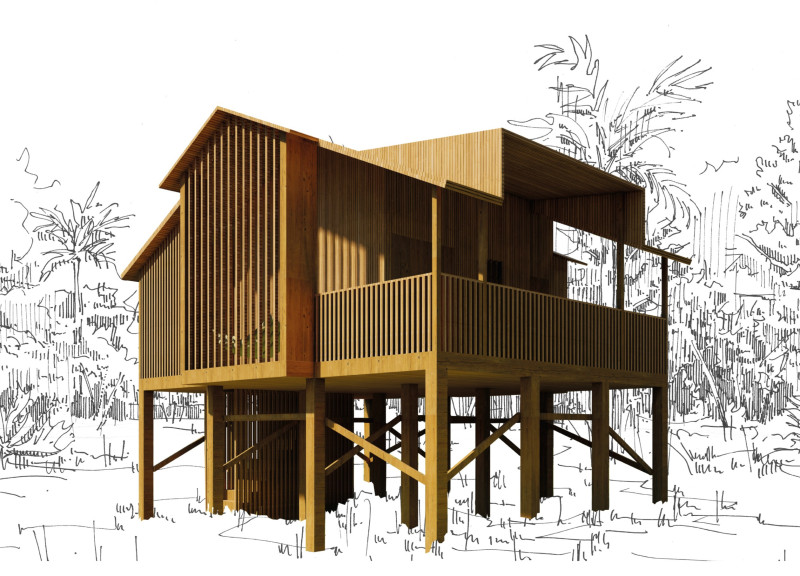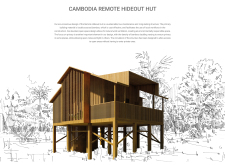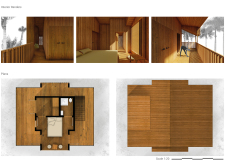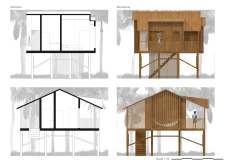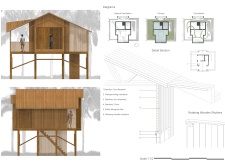5 key facts about this project
The Cambodia Remote Hideout Hut is set in a beautiful natural area, designed to foster a connection with the environment. It serves as a retreat that emphasizes sustainability and the comfort of its users. The design focuses on providing natural ventilation and ensuring privacy, creating a calm living space that aligns well with its surroundings.
Design Concept and Spatial Organization
Sustainability and low maintenance drive the overall design, which features an elevated open-space layout. This design choice promotes airflow throughout the structure, reducing reliance on mechanical cooling systems. With plenty of opportunities for natural light, the living areas feel bright and inviting. The arrangement encourages a balance between indoor and outdoor spaces, giving occupants a chance to relax and enjoy nature.
Materiality and Construction
Bamboo is the main material used in the hut's construction, sourced locally to support the nearby community. This choice reflects a commitment to using available resources while providing a durable structure. In addition to bamboo, the design includes a waterproofing membrane and roller mosquito nets. These elements ensure practical living conditions by managing both weather and pests. Rotating wooden shutters allow for customizable light and privacy, adding to the overall functionality of the space.
Privacy and Circulation
Privacy plays an important role in the design. The varying density of the cladding creates private nooks without blocking out light or views. The layout is carefully organized, allowing easy movement between communal and private areas. This thoughtful planning supports social interaction while respecting personal space, making the retreat a comfortable place for its users.
The architectural details highlight a balance between functionality and aesthetics. The use of bamboo and other materials shows a focus on ecological practices, creating a retreat that is not only practical but also attuned to its setting. The result is a space where occupants can connect with both nature and themselves.


